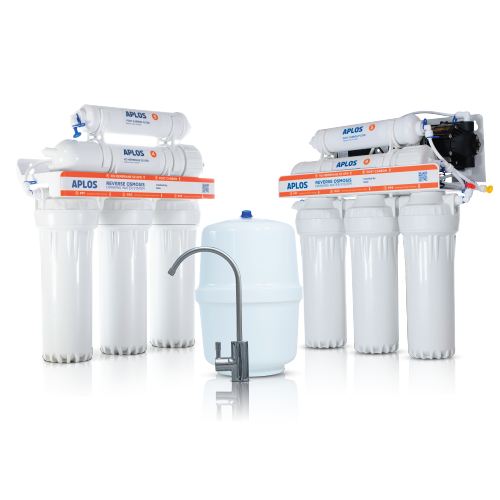What is APLOS?
APLOS is an EPS brand of quality domestic reverse osmosis drinking water systems, featuring two clear product offerings: standard and direct flow RO systems. Systems are equipped with high-grade components that are designed to ensure reliable operation and deliver top-quality water purification.
Benefits of APLOS
Reverse Osmosis Drinking Water System
- High quality safe drinking water
- Eliminates bottled water waste
- Perfect tasting tea and coffee
- Prepared food taste better
- Home appliances (kettle, iron, steam cooker, air humidifier etc.) will be protected from scale
- Can be used to produce pure water for aquariums
Standard Range
Standard RO systems consist of three pre-filters, membrane, post-carbon filter, storage tank, and dedicated tap.
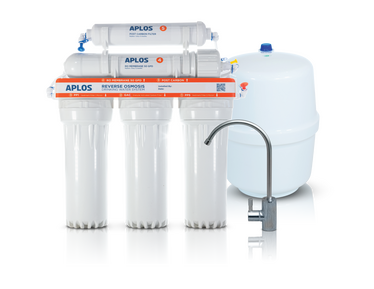
APLOS 5 Stage Non-Pumped
Reverse Osmosis System, 50GPD
- Complete with pressure tank, modern tap, installation kit
- 7.9L of purified drinking water per hour
- Cost-effective and highly efficient
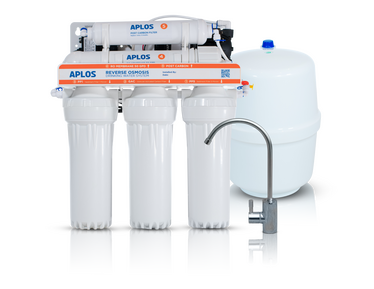
APLOS 5 Stage Pumped
Reverse Osmosis System, 50GPD
- 5 stage filtration for homes with low mains pressure below 3 bar
- Complete with pressure tank, modern tap, installation kit
- Low maintenance cost
Direct Flow Range
Direct Flow are tankless compact design multilayer filtration systems with quick filter change technology, integrated filter life indicators and flexible installation options.
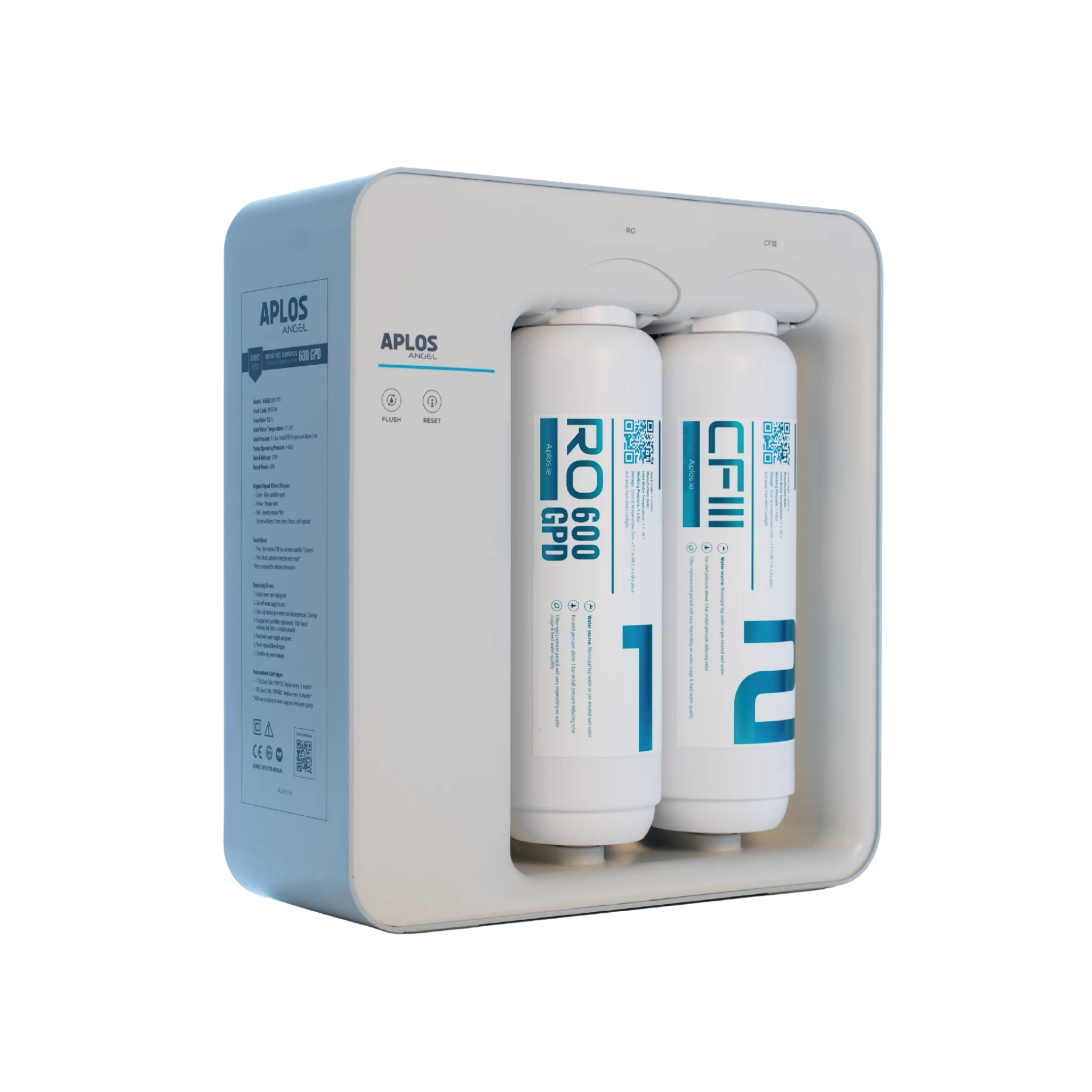
APLOS Angel
4-Stage Direct Flow
Reverse Osmosis System, 600GPD
- Super Compact Tankless design W374*D155*H413
- 90L of drinking water per hour
- RO performance indicators
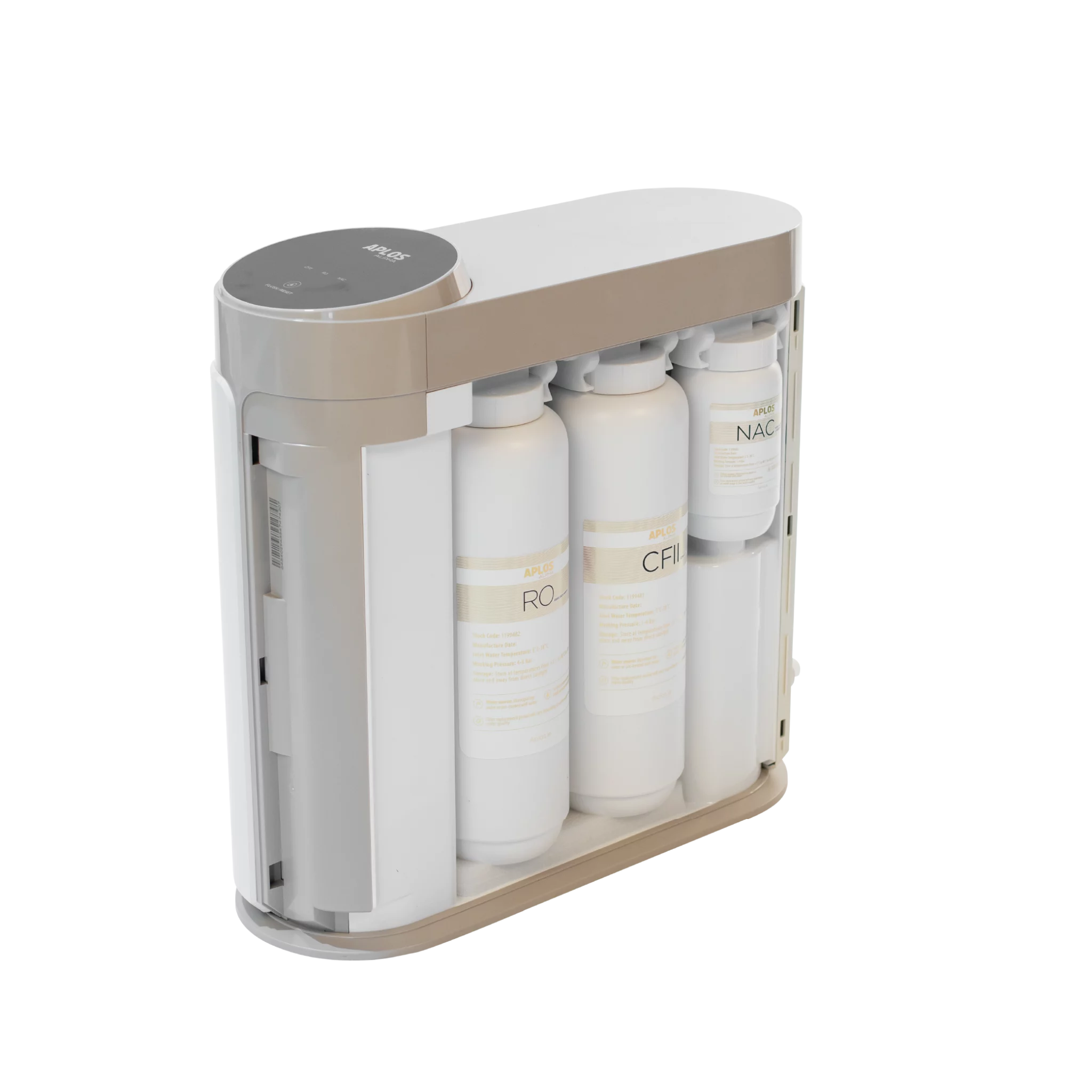
APLOS Alpha
5-Stage Direct Flow
Reverse Osmosis System, 600GPD
- Dual water outlet for purified RO and filtered water
- DIY filter replacement
- Display signal-filter lifespan
FAQ
Most frequent questions and answers
The key differences are in design and operation. Standard 5-stage domestic reverse osmosis consist of three generic pre-filters, membrane, post-carbon filter, storage tank, and dedicated tap. These systems operate with a slower flow rate and store purified water in a tank.
In contrast, domestic direct flow reverse osmosis systems offer a faster flow rate, signal when filters need replacement, feature only 2 or 3 compound filters, DIY 3-second filter replacement, and don’t limit purified water by avoiding the use of a storage tank. Direct flow reverse osmosis systems are specifically engineered with an internal powerful pump and require power to operate. This design makes them ideal for households with low or standard mains pressure.
In general, standard range reverse osmosis systems are more budget-friendly, while direct flow systems are considered high-end products due to the incorporation of advanced features.
Reverse osmosis (RO) systems require pressure to operate. Variations in pressure either too high or low can cause changes in purified water quality. RO systems can operate with a minimum pressure of 3 bar although 4 bar is more ideal. Systems should also be limited so that they do not exceed the maximum 6 bar operating pressure. This is normally done with a pressure reducing valve(PRV). Pumped RO system is a better choice in low mains pressure areas. If uncertain, opt for a pumped unit and PRV. There’s no downside; these units produce water at the fastest rate and operate optimally at higher pressure.
Yes, maintenance is essential for domestic reverse osmosis systems. If not maintained, the system’s performance can decline, and the filters may become less effective. This can lead to impurities in the water and potentially damage the system over time. Regular and timely filter change ensures continued efficiency and the production of high-quality purified water.
While we generally recommend professional installation, you can easily install a domestic reverse osmosis system yourself. Simply follow our user-friendly step-by-step manual instructions, which we have carefully designed for clear guidance.
Domestic reverse osmosis treats hardness by removing minerals like calcium and magnesium. Signs of hard water include scale buildup in your kettle and fixtures, soap scum, difficulty lathering soap, and water spots. You can also use water testing kits to confirm hardness.
Yes, using a domestic reverse osmosis system can significantly improve the taste of your tap water. RO systems effectively remove impurities, contaminants, and minerals, resulting in a purer and cleaner taste in the water. The process enhances the overall quality, making it more refreshing and enjoyable to drink.
The space needed under the sink for a traditional 5-stage domestic reverse osmosis system with a pressure tank is typically about 0.2m³. In contrast, opting for a direct flow RO unit can reduce the required space to as little as 0.03m³.
A domestic reverse osmosis system is connected to the mains water supply by attaching to the cold water line under the sink. This connection allows untreated water to flow into the system, where it undergoes filtration through the reverse osmosis membrane, producing purified water for use from a dedicated RO tap or Tri-flow tap offering a convenient alternative if you prefer not to drill a separate hole in your sink. Our range of reverse osmosis are supplied with all necessary components to install.


